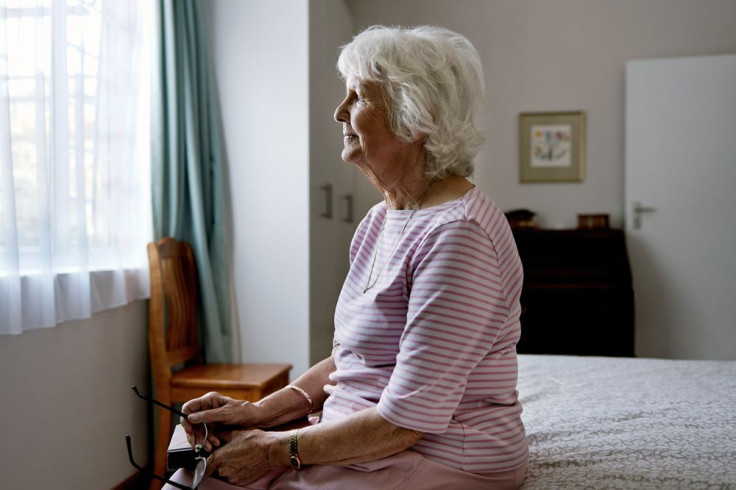New Widows Dealing With Grief Too Often Diagnosed With Depression; Why The DSM-5 Combines Bereavement And Depression

So many people, when talking about finding love, swoon over the idea of “growing old together.” It’s an ambitious goal. And with divorce rates dropping from their peak in the 1980s, when they were around 50 percent, more people seem to be on board with aging together. Unfortunately, there also comes a time when one spouse will die, and the other will become a widow or widower. A new study finds that while such an event can lead to depressive symptoms, some of these cases might not have to end in a diagnosis of major depressive disorder (MDD).
Researchers from the University of Leuven, Belgium, looked at the mental health of 241 people aged 65 and older who had lost their spouse six months after their death, and compared symptoms of depression to those among a group of still-married couples. They found that while the death of a spouse can lead to depressive symptoms like loneliness, few of them are as specific as the criteria required for a diagnosis, as determined by the Diagnostic and Statistical Manual of Mental Disorders 5 (DSM-5) — the manual health care providers use to diagnose psychiatric conditions. They also found that these few initial symptoms can trigger subsequent depressive symptoms.
“Just because depressive symptoms are present in general doesn’t mean that everybody in the sample has depression,” Dr. Eiko Fried, lead author of the study and postdoctoral research fellow at the university, told Medical Daily in an email. But some doctors might still mistake these symptoms for depression, rather than the more common, and normal, period of sadness and grieving we call bereavement. When this happens, doctors run the risk of turning a normal condition into a medical one, filled with medications and other unnecessary treatments.
The problem, the researchers write, comes in part from criteria used to diagnose depression in the DSM-5. The two previous versions of the manual advised doctors to stop short of diagnosing MDD in patients who had lost loved ones during the previous two months — referred to as “bereavement exclusion” —on the basis that grief is a normal response and not a mental disorder.
DSM-5, however, was printed without the bereavement exclusion, and replaced with notes cautioning doctors to “differentiate between normal grieving associated with a significant loss and a diagnosis of a mental disorder.” These notes said that grief came in waves, “often intermixed with positive memories of the deceased,” while “in depression, mood and ideation are almost constantly negative.” Another note said that while self-esteem is preserved in grief, MDD causes feelings of worthlessness and self-loathing.
The changes were made to “prevent major depression from being overlooked,” since bereavement may trigger MDD in people who are predisposed to psychiatric conditions. But really, it makes diagnosing someone complicated, as they may exhibit some symptoms of depression that stemmed from earlier symptoms more indicative of bereavement.
It’s these symptoms that Fried and his team believe can be targeted without a diagnosis for MDD, especially if they’re caught early. “Intervention before diagnosis means that you want to try to avoid mental health problems before they turn from a couple of symptoms into a full-fledged disease,” Fried said. “In this case, it is quite obvious that older individuals, after bereavement, will develop loneliness, which, in some cases, can turn into a full-fledged depression. In that sense, prevention strategies targeting loneliness may be helpful.”
Source: Fried E, Bockting C, Arjadi R, et al. From Loss to Loneliness: The Relationship Between Bereavement and Depressive Symptoms. Journal of Abnormal Psychology. 2015.



























